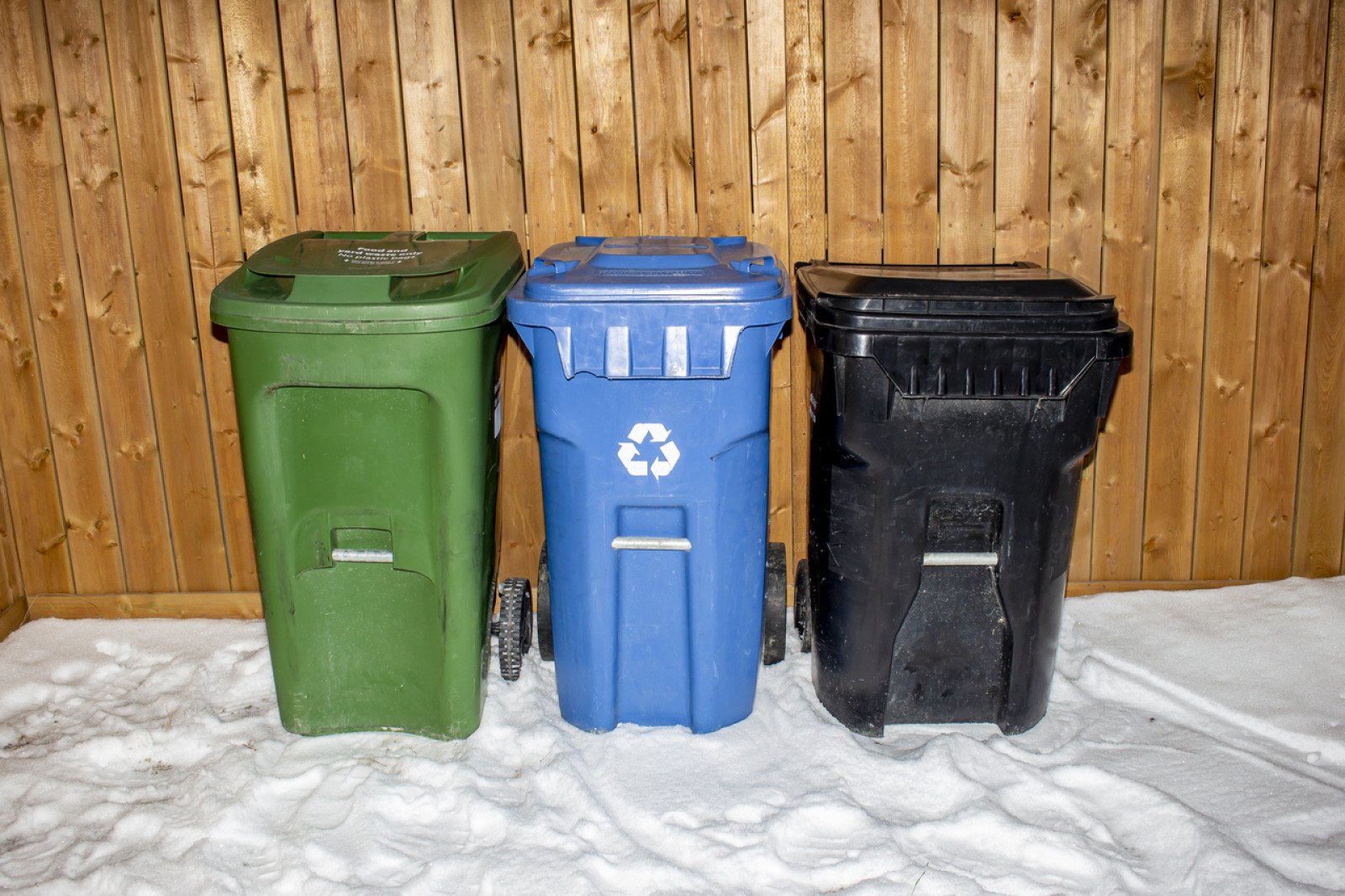The laws of thermodynamics
Decide which of the laws of thermodynamics is the most useful for assessing waste management strategies.

Overview
The activity introduces the practices from the waste hierarchy (reduce, reuse, and recycle) and reviews the laws of thermodynamics. Students deepen their understanding of the laws by deciding which would be the most useful for deciding which practice has the smallest environmental footprint.
Instructions
What you'll need
- "Rating the laws" worksheet (one for each student)
- "Laws of thermodynamics" handout (one for each group)
- Begin the activity by pairing your students and providing each student with a copy of "Rating the laws" worksheet. Briefly explain that reduce, reuse, and recycle are parts of the waste management hierarchy, a framework designed to guide how waste might be managed.
- Ask groups to rank the three practices according to the size of their environmental footprints: Which practice would use the most energy? Which practice requires the least? Encourage students to note their initial rankings on their worksheets.
- Invite students into small groups to share their initial rankings and thinking with the class. As they share, explain that the challenge of this activity is to use the Laws of Thermodynamics to decide which practice has the smallest environmental footprint.
- Provide each group with a copy of the "Laws of thermodynamics" handout. Briefly review the laws with your students, and ask groups to decide which law might be the most useful for deciding which practice has the smallest footprint. As groups share their decisions, use their thinking to co-develop or present the criteria for a useful theory. A useful theory is:
- Applicable: In addition to describing how things work, a useful theory helps explain situations that don’t work or help predict results or outcomes.
- Relevant: A useful theory is relevant to the situation.
- Ask groups to rate each of the laws using their worksheets and the handout. Remind students to use the criteria to guide their thinking. After groups have rated each law, prompt them to select the law that is the most useful.
- Encourage groups to share their decisions and thinking with the class.
- To conclude the activity, guide students’ back to their initial ratings of the three practices from the waste management hierarchy. What would they change? What would they keep the same? Encourage students to share their thinking with the class.
Modify or extend this activity
Extension
- Invite groups to select a specific example of one of the practices (reuse = buying a used car rather new), and using the laws of thermodynamics to assess the practice.
- Invite groups to select a method of generating electricity, and using the laws of thermodynamics to assess the method.
Modification
- Model the use of criteria with one of the laws of thermodynamics, preferably the one that is least likely to apply.
- Ask groups to rate one of the laws.
Curriculum Fit
Chemistry 11
Big idea
- Matter and energy are conserved in chemical reactions.
Content
- Local and other chemical processes
- Green chemistry
Curricular competencies
Questioning and predicting
- Demonstrate a sustained intellectual curiosity about a scientific topic or problem of personal, local, or global interest
- Make observations aimed at identifying their own questions, including increasingly abstract ones, about the natural world
Planning and conducting
- Assess risks and address ethical, cultural, and/or environmental issues associated with their proposed methods
Processing and analyzing data and information
- Use knowledge of scientific concepts to draw conclusions that are consistent with evidence
- Analyze cause-and-effect relationships
Evaluating
- Demonstrate an awareness of assumptions, question information given, and identify bias in their own work and in primary and secondary sources
- Consider the changes in knowledge over time as tools and technologies have developed
- Consider social, ethical, and environmental implications of the findings from their own and others’ investigations
- Assess risks in the context of personal safety and social responsibility
Applying and innovating
- Contribute to finding solutions to problems at a local and/or global level through inquiry
- Implement multiple strategies to solve problems in real-life, applied, and conceptual situations
- Consider the role of scientists in innovation
Communicating
- Communicate scientific ideas and information, and perhaps a suggested course of action, for a specific purpose and audience, constructing evidence-based arguments and using appropriate scientific language, conventions, and representations
Assessments
Throughout the activity, consider how well students:
- Apply their understanding of the laws of thermodynamics to a real-world challenge such as waste management.
- Recognize the importance of science in developing energy solutions that are both scientifically sound and environmentally friendly.
- Provide evidence to support their justification that demonstrates an understanding of the criteria and a willingness to consider new information.
- Use appropriate vocabulary that demonstrates an understanding of the key chemistry concepts including the Laws of Thermodynamics, systems, thermal equilibrium, energy, work, and entropy.
Teaching Notes
0th (zeroth) law of thermodynamics
If two systems are each in thermal equilibrium with a third system, they are in thermal equilibrium with each other. This law helps define the concept of temperature.
First law of thermodynamics
Energy can neither be created nor destroyed; it can only be transferred or changed from one form to another. The energy in a system can be converted to heat, or work, or other things, but the total amount of energy always stays the same.
For example, turning on a light does not actually produce energy; it is the conversion of electrical energy to light and heat energy.
Second law of thermodynamics
This law states that in a closed system, entropy does not decrease.
Entropy is a measure of how ordered or disordered energy is. Ordered energy is useful; an example would be the energy stored in a battery.
Disordered energy is less useful. An example is the energy given off by a fire. During an irreversible process like a fire, the entropy of a system always increases.
Entropy is a thermodynamic property of matter and is related to the amount of energy that can be transferred from one system to another in the form of work. In a system with a fixed amount of energy, the value of the entropy ranges from zero to a maximum. If the entropy is at its maximum, then the amount of work that can be transferred is equal to zero. If the entropy is at zero, then the amount of work that can be transferred is equal to the energy of the system.
Third law of thermodynamics
The entropy of a system approaches a constant value as the temperature approaches absolute zero. With the exception of non-crystalline solids (glasses), the entropy of a system at absolute zero is typically close to zero.







